Class 8 Social Science History Chapter 11 The Making of the National Movement: 1870s-1947 NCERT Solutions
Class 8 History Chapter 11 The Making of the National Movement Ncert Textbook Questions Solved
Question 1.
Why were people dissatisfied with British rule in the 1870s and 1880s?
Answer:
The dissatisfaction against British rule was intensified in the 1870s and 1880s.
1. The Arms Act was passed in 1878, which disallowed Indians from having arms.
2. Same year the Vernacular Press Act was also enacted to silence the critics of the government.
- The Act allowed the government to confiscate the assets of newspapers including their printing presses if the newspapers published anything “objectionable”.
3. In 1883, there was a furore over the attempt by the government to introduce the Ilbert Bill.
- The bill provided for the trial of British or European persons by Indians, and sought equality between British and Indian judges in the country.
- But the British (white) forced the government to withdraw the bill. Indians burst into anger. This event highlighted the whim of the British against Indians.
Question 2.
Who did the Indian National Congress wish to speak for?
Answer:
The Indian National Congress wished to speak for the entire people belonging to different communities of India.
Question 3.
What economic impact did the First World War have on India?
Answer:
- World War I altered the economic and political situation in India.
- Defence expenditure of the Government of India rose manifold. As a consequence taxes on individual incomes and business profits increased several times.
- Increased military expenditure and demands for war supplies, resulted in a sharp rise in prices, causing great difficulties for the common people.
- Demand for industrial goods (jute bags, cloth, rails) and a decline of imports from other countries led to the expansion of Indian industry. So, Indian business groups earned a huge profit.
Question 4.
What did the Muslim League resolution of 1940 ask for?
Answer:
The Muslim League resolution of 1940 asked for “Independent States’ for Muslims in the north-western and eastern areas of the country. The resolution did not mention partition or the name Pakistan.
Question 5.
Who were the Moderates? How did they propose to struggle against British rule?
Answer:
The Congress in the first twenty years of its formation was “moderate” in its objectives and methods.
1. During this period it demanded a greater voice for Indians in the government and in administration.
- It wanted that the Indians should be given more representation in the Legislative Councils and given more power.
- Legislative councils should be introduced in provinces where it did not exist.
- It demanded that Indians be placed in high positions in the government.
- For this, it called for civil service examinations to be held in India as well, not just in London.
2. Other demands of the Congress included:
- The separation of the judiciary from the executive
- The repeal of the Arms Act and
- Freedom of speech and expression.
3. The early Congress raised numerous economic issues.
- The Congress demanded:
- reduction of revenue
- cut in military expenditure
- more funds for irrigation
4. It passed various resolutions on:
- The salt tax
- Good treatment of Indian laborers abroad
- The sufferings of forest dwellers.
5. The Moderate leaders wanted to develop public awareness about the unjust nature of British rule. For this, they published newspapers, wrote articles, and showed the economic ruin of the country by the British.
- They criticised British rule in their speeches and sent representatives to different parts of the country to mobilise public opinion.
6. Congress talked about many other issues concerned with the Indians, besides those of professional groups, zamindars, and industrialists.
7. The Moderates felt that the British had respect for the ideals of freedom and justice.
- So they would accept these demands if they made the government aware of the feelings of Indians.
Question 6.
How was the politics of the Radicals within the Congress different from that of the Moderates?
Answer:
The Radicals within Congress cherished different opinions. They had a deep faith in action and wanted to drive away from the foreigners as soon as possible. They criticised the Moderates for their “politics of prayers’ and gave emphasis on self-reliance and constructive work. They argued that people must fight for swaraj. Unless they fought against the British rule unitedly, they would not bring independence to their country.
Question 7.
Discuss the various forms of the Non-Cooperation Movement took in different parts of India. How did people understand Gandhiji?
Answer:
- The leaders of the Khilafat agitation, Mohammad Ali and Shaukat Ali, wished to start a full-fledged Non-Cooperation Movement.
- Gandhiji supported their call. He urged the Congress to campaign against “Punjab wrongs” (Jallianwala massacre), the Khilafat wrong and demand
- Different classes and groups, interpreting Gandhiji’s call in their own manner, protested in their own ways. Thus, people linked their movements to local grievances.
Examples:
- In Kheda, Gujarat, Patidar peasants organised non-violent campaigns against the high land revenue demand of the British.
- In coastal Andhra and interior Tamil Nadu, liquor shops were
- In the Guntur district of Andhra Pradesh, tribals and poor peasants staged a number of “forest satyagrahas” by sending their cattle into forests without paying grazing fee.
- In many forest villages, peasants declared swaraj and believed that “Gandhi Raj” would be established.
- In Sind (now in Pakistan), Muslim traders and peasants supported the Khilafat call wholeheartedly.
- In Bengal, the Khilafat/Non-Cooperation alliance gave a strong communal unity and strength to the national movement.
- In Punjab, the Akali agitation of the Sikhs removed corrupt mahants—supported by the British—from their gurdwaras.
- In Assam, tea garden labourers shouted “Gandhi Maharaj ki Jaif. They demanded a big increase in their wages. They left the British-owned plantations declaring that they were following Gandhiji’s wish.
- In the Assamese Vaishnava, songs of the period the reference to Krishna, was Substituted by “Gandhi Raja”.
Understanding of Gandhiji by the people
- People thought of Gandhiji as a messiah, as someone who could help them overcome their misery and poverty.
- Gandhiji wished to build class unity, not class conflict, yet peasants could imagine that he would help them in their fight against zamindars.
- Agricultural labourers believed Mahatma Gandhi would provide them land and get taxes reduced.
- Common people credited Gandhiji with their own.
Question 8.
Why did Gandhiji choose to break the salt law?
Answer:
Gandhiji was very much worried about the salt law. According to this law, the state had a monopoly on the manufacture and sale of salt. Gandhiji thought that it was sinful to tax salt because it is an essential item of our food and is required equally by the rich and the poor. Hence he decided to break this law in anticipation that people from all walks of life would extend their support. Needless to say that Gandhiji’s Salt March became very successful.
Question 9.
Discuss those developments of the 1937 – 47 period that led to the creation of Pakistan.
Answer:
Developments of 1937-1947 period Leading to the creation of Pakistan:
- Muslim league was formed in 1906 but Congress’s failure to mobilise the Muslim masses in the 1920s allowed the League to widen its social support.
- In Election results of 1937, they got very less seats, even in areas where a large number of Muslims lived, made them feel as a minority community.
- In 1940 two nation theory was floated by them.
- Elections to the provinces were again held in 1946. Congress did well in the “General” constituencies but the the league’s success in the seats reserved for Muslims was spectacular. So the league persisted with its demand for “Pakistan”.
- In March 1946 the British cabinet sent a three-member mission to Delhi to examine this demand and to suggest a suitable political framework for a free India.
- After the failure of the Cabinet Mission, the Muslim League decided on mass agitation for winning its Pakistan demand and announced 16 August 1946 as “Direct Action Day”.
- On this day riots broke out in Calcutta, lasting several days and resulting in the death of thousands of people, mostly Hindus.
- By March 1947 violence spread to different parts of northern India.
- With mass agitation, India was partitioned in 1947 and Pakistan was born.
Question 10.
Find out how the national movement was organised in your city, district, area or state. Who participated in it and who led it? What did the movement in your area achieve?
Answer:
(Students to do it as per their area)
Organisation of National Movement in our city:
Hints:
- Visit of Gandhiji.
- Formation of Action Committees.
- Meetings and awareness of different events at the national level.
- Prabhat Pheries and Rallies.
- Protest march to district headquarters.
- Mass arrests.
- Hanging of the freedom fighters.
- Award after getting independence.
Question 11.
Find out more about the life and work of any two participants or leaders of the national movement and write a short essay about them. You may choose a person not mentioned in this chapter.
Answer:
Life and work of two leaders:
Chakravarti Rajagopalachari
- He played an important role with Gandhiji before the Gandhi-Jinnah talks, 1944.
- A veteran nationalist and leader of the Salt Satyagraha in the South. C. Rajagopalachari is popularly known as Rajaji.
- He served as a member of the Interim Government of 1946 and as free India’s first Indian Governor-General.
Sardar Vallabhbhai Patel
- He played an important role in the negotiations for independence from 1945-47.
- Patel hailed from an impoverished peasant-proprietor family of Nadiad, Gujarat.
- A foremost organiser of the freedom movement from 1918 onwards, Patel served as President of the Congress in 1931.
- The British government declared 565 states, small and big, independent. They were given freedom: whether to join in India or Pakistan or remain independent.
- Sardar Patel did herculean efforts for merging all the states, included in Indian territory, in India.
Class 8 History Chapter 11 The Making of the National Movement Exercise Questions
Question 1.
Choose the correct option.
(i) The book Poverty and Un-British Rule in India is authored by
(a) Mahatma Gandhi
(b) Dadabhai Naoroji
(c) Jawaharlal Nehru
(d) Sarojini Naidu
(ii) The Marathi newspaper was edited by
(a) Balgangadhar Tilak
(b) Bepin Chandra Pal
(c) Lala Lajpat Rai
(d) Dadabhai Naoroji
(iii) The slogan ‘Freedom is my birthright and I shall have it’ was raised by
(a) Bepin Chandra Pal
(b) Sarojini Naidu
(c) Lala Lajpat Rai
(d) Balgangadhar Tilak
(iv) The Indian who renounced his knighthood after the Jallianwala Bagh massacre
(a) Subhas Chandra Bose
(b) Rabindranath Tagore
(c) Abanindranath Tagore
(d) Bhagat Singh
(v) The first Indian woman to become President of the Indian National Congress was
(a) Sarojini Naidu
(b) Kamla Nehru
(c) Begum Rokeya Shakhawat Hossain
(d) Kasturba Gandhi
(vi) Free India’s first Indian Governor- General was
(a) Lala Lajpat Rai
(b) Motilal Nehru
(c) C. Rajagopalachari
(d) Sardar Ballabbhai Patel
Answer:
(i) (b), (ii) (a), (iii) (d), (iv) (b), (v) (a), (vi) (c).
Question 2.
Fill in the blanks with appropriate words to complete each sentence.
- The Indian National Congress was established when ……………. delegates from all over the country met at ……………… in December 1885.
- The Moderate leaders did not believe in ………….. actions.
- The All India Muslim League was formed by a group of Muslim …………. and …………….
- The Rowlatt Act curbed ………… rights such as the freedom of expression and strengthened …………… powers.
- Mahatma Gandhi abruptly called off the ……………… Movement when it took violent turn.
- The Congress resolved to fight for Puma Swaraj in 1929 under the presidentship of ……………….
- The Quit India Movement started in August …………..
Answer:
- 72, Bombay
- extreme
- landlords, nawabs
- fundamental, police
- Non-Cooperation
- Jawaharlal Nehru
- 1942.
Question 3.
State whether each of the following statements is True or False.
- Subhas Chandra Bose was a moderate nationalist.
- The Simon Commission had two Indian representatives.
- The Jallianwala Bagh massacre occurred in Amritsar on Baishakhi day.
- The Swadeshi Movement started after the partition of Bengal.
- MaulanaAzad became the major spokes-person for the demand for Pakistan.
- Khan Abdul Ghaffar Khan, also known as Badshah Khan, founded the Khudai Khidmatgars.
Answer:
- False
- False
- True
- True
- False
- True
Question 4.
Match the items given in Column A correctly with those given in Column B.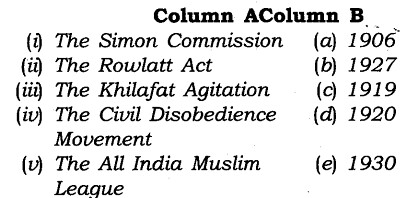
Answer:
(i) (b), (ii) (c), (iii) (d), (iv) (e), (v) (a).
Class 8 History Chapter 11 The Making of the National Movement Very Short Answer Type Questions
Question 1.
What is the literal meaning of sarvajanik?
Answer:
The literal meaning of sarvajanik is ‘of or for all the people’. It is made
of two words – sarva = all + janik = of the people.
Question 2.
Who was A.O. Hume? What role did he play in the history of India?
Answer:
A.O. Hume was a retired British official. He played an important role in bringing Indians from the various regions together.
Question 3.
Who was the Viceroy of India at the time of the partition of Bengal
Answer:
At that time Lord Curzon was the Viceroy of India.
Question 4.
What was the Swadeshi Movement known as in deltaic Andhra?
Answer:
In deltaic Andhra the Swadeshi Movement was known as the Vandemataram Movement.
Question 5.
Name the three leading members of the Radical group.
Answer:
Bepin Chandra Pal, Balgangadhar Tilak and Lala Lajpat Rai.
Question 6.
Why did Mahatma Gandhi along with other Indians establish the Natal Congress in South Africa?
Answer:
He did so in order to fight against racial discrimination in South Africa.
Question 7.
Name three places where Gandhiji started local movements.
Answer:
Champaran, Kheda and Ahmedabad.
Question 8.
Why did Rabindranath Tagore renounce his knighthood?
Answer:
Rabindranath Tagore renounced his knighthood to express the pain and anger of the country following the Jallianwala Bagh atrocities.
Question 9.
Who were the leaders of the Khilafat agitation?
Answer:
The leaders of the Khilafat agitation were Mohammad Ali and Shaukat Ali.
Question 10.
What does ‘Punjab wrongs’ refer to?
Answer:
It refers to Jallianwalla Bagh massarcre that occurred on 13 April, 1919 in Amritsar on Baishakhi day.
Question 11.
Who was Chitta Ranjan Das?
Answer:
He was a lawyer from East Bengal and was active in the Non-Cooperation Movement.
Question 12.
What does RSS stand for?
Answer:
RSS stands for Rashtriya Swayamsevak Sangh.
Question 13.
Who was Bhagat Singh? What slogan did he raise?
Answer:
Bhagat Singh was a revolutionary nationalist. His slogan was—Inquilab Zindabad.
Question 14.
What does HSRA stand for?
Answer:
HSRA stands for Hindustan Socialist Republican Association.
Question 15.
Why did Mahatma Gandhi decide to break the Salt Law?
Answer:
Mahatma Gandhi decided to break the Salt Law because it established the monopoly of the state on the manufacture and sale of salt.
Question 16.
On what condition-were the Congress leaders ready to support the British war effort at the time of the Second World War?
Answer:
The Congress leaders were ready to support the British war effort on condition that they would declare India’s independence after the war.
Question 17.
Did the British accept their condition?
Answer:
No, the British did not accept their condition.
Question 18.
Who raised the slogan ‘do or die’?
Answer:
Mahatma Gandhi raised this slogan.
Question 19.
Why did the Muslim League announced 16 August 1946 as ‘Direct Action Day’?
Answer:
It announced 16 August, 1946 as ‘Direct Action Day’ in support of its demand for Pakistan.
Class 8 History Chapter 11 The Making of the National Movement Short Answer Type Questions
Question 1.
What were the demands of the Congress in its early years?
Answer:
In its early years the Congress was moderate in its objectives and methods. It made several demands; which are given below:
- The Congress demanded a greater voice for Indians in the government and in administration.
- It demanded that Indians be placed in high positions in the government. For this purpose it called for Civil Service examinations to be held in India as well, not just in London.
- The Congress demanded for the separation of the judiciary from the executive.
- The repeal of the Arms Act and the freedom of speech and expression was also a major demand of the Congress.
- It also demanded reduction of revenue, cut in military expenditure and more funds for irrigation.
Question 2.
What caused the partition of Bengal in 1905?
Or
Under what pretext, did the British divide Bengal?
Answer:
At the time of partition Bengal was the biggest province of British India which comprised Bihar and parts of Orissa. The British argued for dividing Bengal for reasons of administrative convenience. But it was a totally false argument. In fact, the partition of Bengal was closely tied to the interests of British officials and businessmen. The British also wanted to curtail the influence of Bengali politicians and split the Bengali people. It was therefore, instead of removing the non-Bengali areas from the province, they separated East Bengal and merged it with Assam.
Question 3.
What were the consequences of the partition of Bengal?
Answer:
(a) The partition of Bengal enraged people all over the country. Both the Moderates and the Radicals in the Congress opposed this action of the British.
(b) Public meetings and demonstrations began to be organised. Novel methods of mass protest were also developed. They struggled against the partition of Bengal came to be known as Swadeshi Movement. In Bengal this movement was the strongest. In other regions .such as in deltaic Andhra the movement was called the Vandemataram Movements.
Question 4.
What was the Khilafat agitation?
Answer:
In the year 1920 the British imposed a harsh treaty on the Turkish Sultan, known as Khalifa. It enraged people. Indian Muslims wanted that the Khalifa be allowed to retain control over Muslim sacred places in the erstwhile Ottoman empire. The leaders of the Khilafat agitation Mohammad Ali and Shaukat Ali, now wished to start a full-fledged Non-Cooperation Movement. They got support from Mahatma Gandhi who urged the Congress to campaign against “Punjab wrongs’, the Khilafat wrong and demand swaraj.
Question 5.
How did people participate in the Non-Cooperation Movement during 1921-22?
Answer:
- During these years, thousands of students left government controlled schools and colleges.
- Many lawyers such as Motilal Nehru, C.R. Das, C. Rajagopalachari and Asaf Ali gave up their practices.
- British titles were surrendered and legislatures boycotted.
- People lit public bonfires of foreign cloth.
Question 6.
Why was the Simon Commission sent to India? Why did Indians boycott it?
Answer:
The British government in England sent a Commission headed by Lord Simon in the year 1927 to decide India’s political future. As the Commission had no Indian representative, it was boycotted by all political groups. When the Commission arrived it met with demonstrations with banners saying ‘Simon Go Back’.
Question 7.
What role did Ambabai play in the Indian freedom struggle?
Answer:
Ambabai came from Karnataka. She had been married at age twelve and was widowed at sixteen. Afterwards she began participating in the Indian freedom struggle. She picketed foreign cloth and liquor shops in Udipi. She was arrested, served a sentence and was rearrested. Between prison terms she made powerful speeches, taught spinning and organised prabhat pheris.
Question 8.
Write a brief paragraph on Maulana Azad.
Answer:
Maulana Azad was a great leader of the Indian freedom struggle. He was born in Mecca to a Bengali Father and an Arab Mother. He was well- versed in several languages. He was a scholar of Islam and an exponent of the notion of wahadat-i-deen, the essential oneness of all religions. He was an active participant in the movement launched by Mahatma Gandhi. He was a great advocate of Hindu-Muslim unity. He never approved Jinnah’s two-nation theory. He wanted a country in which Hindus and Muslims lived in perfect harmony.
Question 9.
Write a brief note on Khan Abdul Ghajfar Khan.
Answer:
Khan Abdul Ghaffar Khan was the Pashtun leader from the North-West Frontier Province. He was popularly known as Badshah Khan. He founded the Khudai Khidmatgars, which was a powerful non-violent movement among the Pattans of his province. He was a staunch supporter of Hindu-Muslim unity and was strongly opposed to the partition of India. He criticised his Congress colleagues for agreeing to the division of India in 1947.
Class 8 History Chapter 11 The Making of the National Movement Long Answer Type Questions
Question 1.
What was the Rowlatt Act? Give an account of the Rowlatt Satyagraha.
Answer:
The British passed the Rowlatt Act in the year 1919. The Act curbed fundamental rights such as the freedom of expression and strengthened police powers. The Act was very repressive and therefore it enraged Indians. Prominent leaders of the freedom struggles such as Mahatma Gandhi, Mohammad Ali Jinnah, etc. felt that the government had no right to restrict the basic freedoms of people. They viewed the Act as devilish and tyrannical. Gandhiji decided to oppose this Act. He asked people of India to observe 6 April 1919 as a day of non-violent opposition to the Act, as a day of “humiliation and prayer’ and hartal. He organised Satyagraha Sabhas to launch the movement.
The Rowlatt Satyagraha spread far and wide. It became the first All- India struggle against the British government. In April 1919 several demonstrations and hartals took place in the country. But the government suppressed them taking brutal measures. The Jallianwala Bagh massacre was the climax of its brutality. This incident took place on 13 April in Amritsar on Baishakhi day. Thousands of people had gathered in the Jallianwala Bagh to celebrate the occasion. General Dyre opened fire on them all of a sudden.
Both Hindu and Muslim unitedly criticised the British action.
Question 2.
Describe Gandhi’s march to Dandi.
Answer:
Gandhiji felt that Purna Swaraj would not come on its own. It had to be fought for. He was very much worried about government’s Salt Law. In 1930, he decided to break this law.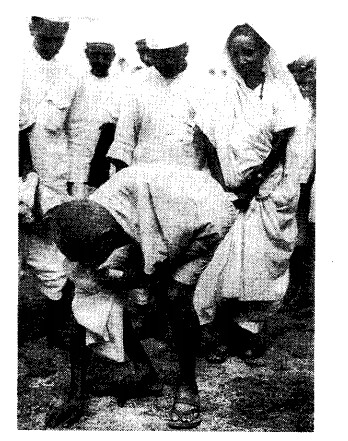
According to the law, the state had a monopoly on the manufacture and sale of salt. Mahatma Gandhi and other prominent leaders of the freedom struggle thought that it was sinful to tax salt because it is an essential item of our food. Both the rich and the poor needed it equally. Gandhiji felt that his Salt March would become popular and would represent the genral desire of freedom to a specific grievance shared by all. On 6 April, 1930, Gandhiji alongwith his followers marched for over 240 miles from Sabarmati to the coastal town of Dandi. Here, they broke the government law by gathering natural salt found on the seashore, and boiling sea water to produce salt.
A large number of people including women participated in this historic march. The government tried to crush the movement through brutal action against peaceful satyagrahis. Thousands were arrested and sent to jail. But the movement played a significant role in achieving freedom of India.
Question 3.
Under what circumstances did Gandhiji initiate the Quit India Movement?
Answer:
In September 1939, the Second World War broke out. The. British government in India needed help from the Indian leaders. The leaders were ready to support the British war effort. But in return they wanted that India be granted independence after the war. The British refused to accept the demand. This enraged the Congress ministries. They all resigned to show their protest.
Mahatma Gandhi was deeply perturbed. He now decided to initiate a new phase of movement against the British rule in the middle of the Second World War. This movement came to be known as the Quit India Movement. Gandhiji thought that the British must Quit India without further delay. He raised the slogan ‘do or die’ which spread among the common mass very soon. But at the same time he warned the people not to be violent in any condition.
The British took repressive measures. Gandhiji along with other leaders were sent to jail immediately. But this did not prevent the movement from spreading. It specially attracted peasants and the youth who gave up their studies to join the movement. Communications and symbols of state authority were attacked all over the country. In several areas people set up their own governments. The British tried to repress these developments severely. About 90,000 people were arrested and wound 1,000 killed in police firing. But the movement did not go in vain. It brought freedom very close.
Class 8 History Chapter 11 The Making of the National Movement Source-Based Questions
Question 1.
Read the following extract (Source 2) taken from the NCERT textbook and answer the questions that follow:
In pursuit of gold
This is what a Moderate leader, Dinshaw Wacha, wrote to Naoroji in 1887:
Pherozeshah is nowadays too busy with his personal work … They are already rich enough … Mr. Telang too remains busy. I wonder how if all remain busy in the pursuit of gold can the progress of the country be advanced?
Questions:
(i) Who was Dinshaw Wacha?
(ii) Whom did he write to?
(iii) What did he write in the letter?
Answers:
(i) Dinshaw Wacha was a Moderate leader of the Congress.
(ii) He wrote to Naoroji.
(iii) He wrote in the letter that if people like Pherozeshah and Telang remained busy in making wealth, then how would the country achieve its independence?
Class 8 History Chapter 11 The Making of the National Movement Picture-Based Questions
Question 1.
Observe the pictures taken from NCERT textbook subsequently and answer the questions that follow: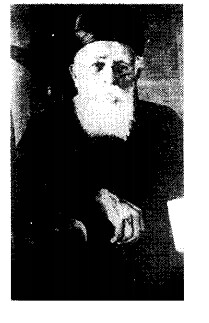
Questions:
(i) Who is he?
(ii) Which book did he write?
(iii) What was the book about?
Answers:
(i) He is Dadabhai Naoroji.
(ii) He wrote a book named Poverty and Un-British Rule in India.
(iii) The book offered a scathing criticism of the economic impact of British rule.
Question 2.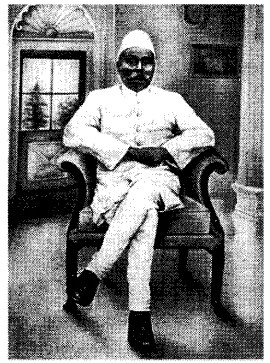
Questions:
(i) Identify the above personality.
(ii) Which state did he belong to?
(iii) Write two sentences about him.
Answers:
(i) Lala Lajpat Rai.
(ii) He belonged to Punjab.
(iii) He was one of the leading members of the Radical group. He criticised the moderates for their politics of petitions:
Question 3.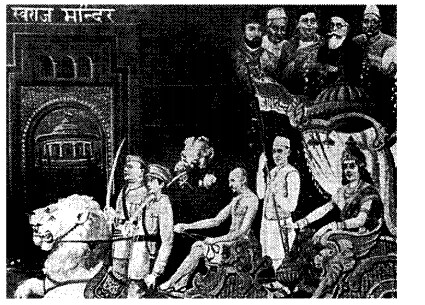
Questions:
(i) Describe the image given above.
(ii) Who is holding the tricolour?
Answers:
(i) In the above image Mahatma Gandhi has been shown as a divine being occupying a place within the pantheon of Indian gods. Here he is driving Krishna’s chariot, guiding other nationalist leaders in the battle against the British.
(ii) Pandit Jawaharlal Nehru is holding the tricolour.
.png)
.png)